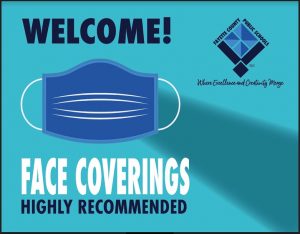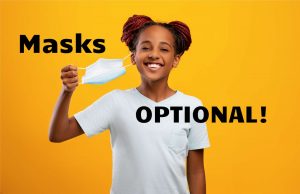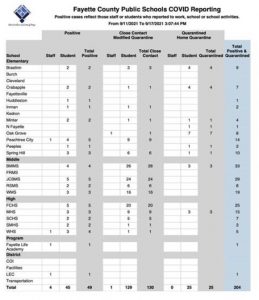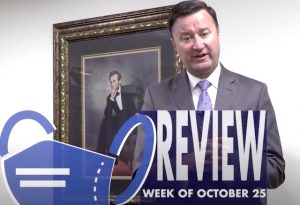Parents, students: See what the new school life may look like —
Reopening a business in the days of Covid-19 is tough enough. Reopening a large school system is vastly more complicated. The Fayette County Board of Education on June 1 received an update on the ongoing discussions dealing with reopening schools for the 2020-2021 school year. At this point, the reopening date for Fayette schools is undetermined.
The school system’s Covid-19 Task Force is looking at a laundry list of issues relating to reopening schools for the coming school year.
Though the school year routinely begins each August, there is nothing routine about the pandemic that has altered many aspects of life in America. That is why the reopening schedule, including opening day, for the 2020-2021 school year is currently undetermined.
It is important to note that the numerous items below are draft only, and not finalized.
The report heard by board members contained a number of assumptions the must be considered. Those include:
• The goal of social distancing measures in schools to mitigate the spread of the virus (we will not have zero new cases until a vaccine is available and widely administered).
• The goal is to keep the contagion to a minimum with the focus of protecting those most vulnerable. (low risk, medium risk, high risk)
• We cannot ignore the economic imperative of allowing parents to go back to work.
• Our plan must be affordable.
• Teaching and learning and how that impacts student outcomes will continue to be essential.
• We have to give up the luxury of our past routines and embrace that our practice, going forward, will look different.
The update to board members also dealt with a host of issues related to reopening schools. Those included, but are not limited to:
1) We need multiple options (planning for short and longer-term options with 12-24 month plans)
2) Monthly plan (rolling closures)
3) New CDC guidelines for reopening schools
4) Wear masks over the age of 2
5) No sharing of any items or supplies, all belongings in individual cubbies or labeled containers; no sharing electronic devices, toys, games or learning aids
6) Desks six feet apart, all facing the same way
7) The distance on school buses — one child per seat, skip rows
8) Install sneeze guards and partitions wherever you cannot space six feet apart
9) One-way routes in hallways; tape on sidewalks and walls to assure kids stay six feet apart
10) No communal shared spaces — cafeterias, playgrounds
11) Physical barriers or screens between sinks in bathrooms
12) Only pre-packages boxes or bags of food instead of cafeteria food; kids eat in classrooms
13) No field trips, assemblies, or external organizations in the schools. Limit volunteers and visitors
14) The same children stay with the same staff all day, with minimum switching groups or teachers
15) Stagger arrival and departure times for students to limit exposure to crowds of students
16) If possible, daily health and temperature checks
17) And several rules about cleaning and disinfecting throughout the day and hand-washing frequently
If the above-mentioned items were not enough, the Covid-19 Task Force noted a number of steps to consider in the reopening effort. Those items for consideration included:
• Give students, parents and educators the choice of the full-time virtual/remote learning for the 2020-2021 school year
• K-5 students should be allowed to be in school every day, but adhere to the required social distancing requirements
• Keep all classrooms to approximately 50 percent capacity and do not allow student groups to mix
• Run buses at (approximately) 50 percent capacity
• Masks are worn by everyone in groups, health screen everyone, hand-washing protocols and temperature monitoring protocols. No one comes to school if they are sick
• Staff can circulate if necessary, but students remain contained in their group in order to do contact tracking if necessary
• Have a clear plan ready to go if an outbreak occurs, revert to virtual learning for all, based on defined “trigger points”












Leave a Comment
You must be logged in to post a comment.